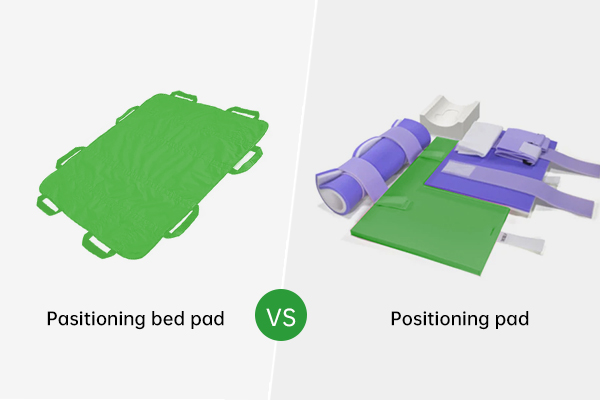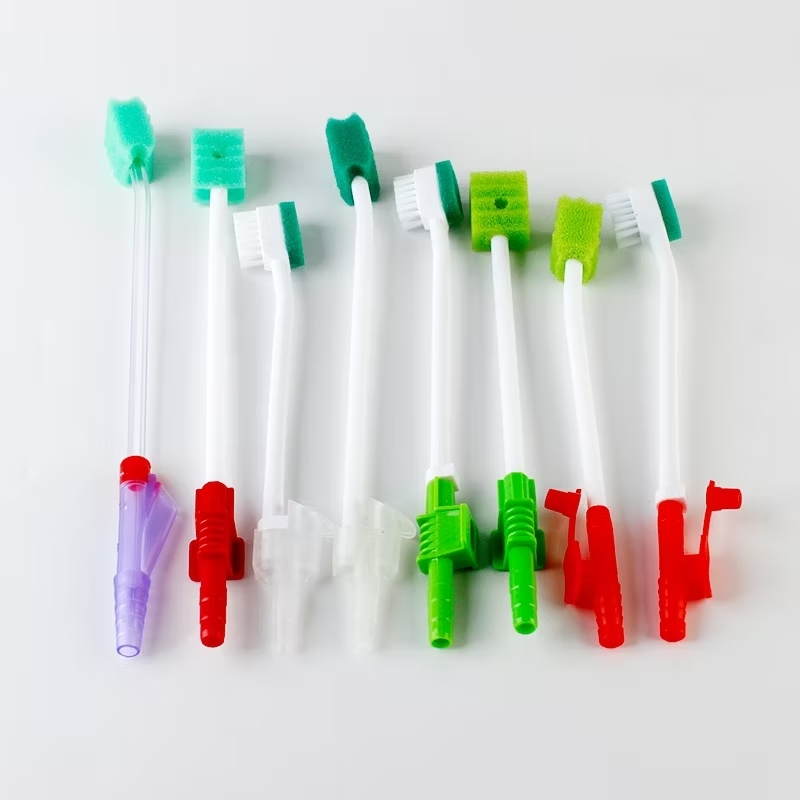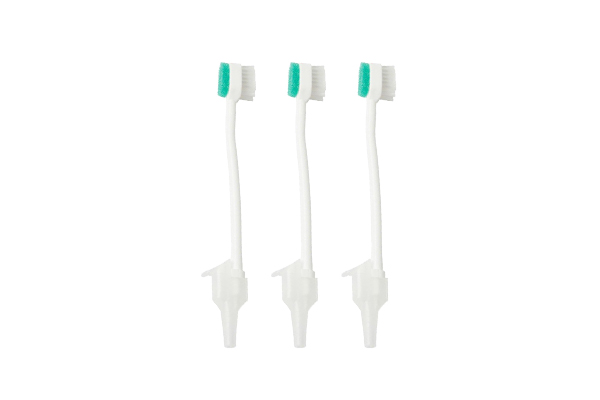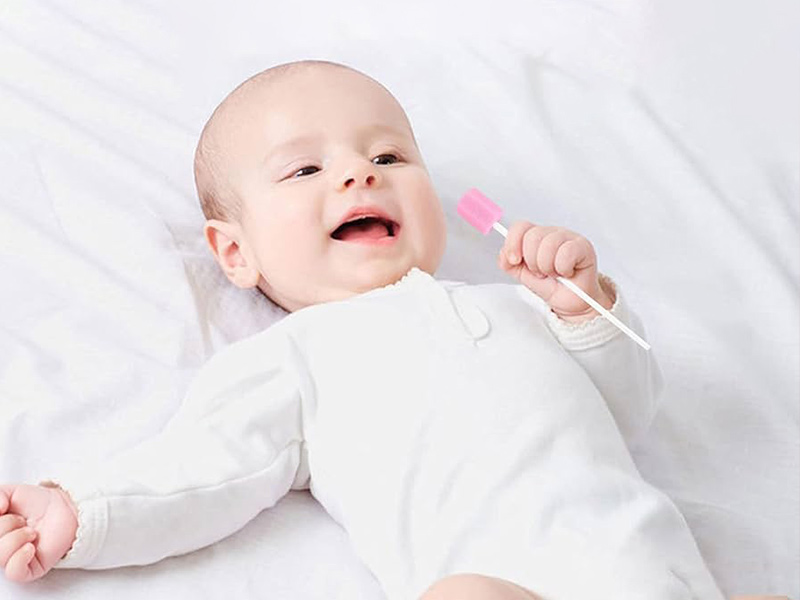Patient comfort, stability, and alignment are essential in healthcare for effective treatment and recovery. Positioning pads and positioning bed pads, while similar, vary in design, materials, and use, catering to specific medical needs. This article explores the differences, ideal uses, and key considerations for each.
What Are Positioning Pads?
A positioning cushion is a support or foam pad used to hold a specific body part in place during medical imaging procedures such as Magnetic Resonance Imaging (MRI) or Computed Tomography (CT).
They come in a variety of shapes and sizes, each targeting a specific body part, such as head supports, armrests, leg supports, and lumbar pads, ensuring that the patient remains in a comfortable and secure position throughout the medical procedure.
Key Features of Positioning Pads:
- Specialized Shapes: Designed to fit specific body parts (head, arms, legs).
- Non-Magnetic Materials: Essential for MRI and CT compatibility.
- Portable and Lightweight: Easy to use, clean, and move between patients and procedures.
- Durability: Constructed for regular use in high-traffic medical environments.
What Are Positioning Bed Pads?
Positioning bed pads, or hospital bed pads, often with handles, are large pads placed on medical beds to support and relieve pressure for patients lying down for long periods. Common in critical care and long surgeries, they cover larger areas than standard positioning pads, offering comfort and reducing the risk of bed sores and pressure injuries.
Positioning bed pads, often made of foam or gel, evenly distribute body weight to relieve pressure on sore areas like the back, hips, and heels. Some advanced pads include anti-slip materials, waterproof covers, and heat-resistant layers for added safety and comfort.
Key Features of Positioning Bed Pads:
- Large Surface Coverage: Designed to fit hospital beds and other long-term care beds.
- Pressure Relief: Prevents pressure sores and supports immobile patients.
- Moisture and Heat Control: Often includes breathable, moisture-wicking layers.
- Durability: Suitable for extended use in patient rooms and long procedures.
Key Differences Between Positioning Pads and Positioning Bed Pads
While positioning pads and bed pads serve a similar purpose—enhancing patient comfort and support—their differences lie in their specific design, materials, and uses.
| Feature | Positioning Pads | Positioning Bed Pads |
| Size & Coverage | Small, targeted to specific body parts | Large, covers most or all of the bed surface |
| Primary Function | Stability and alignment for imaging | Pressure relief and comfort for long-term lying |
| Materials | MRI-safe, non-magnetic, foam or gel | Gel, foam, often with waterproof covers |
| Usage Duration | Short-term, during scans or procedures | Long-term, used for hours or days |
| Mobility | Highly portable, used in multiple rooms | Generally stays on a specific bed |
| Target Areas | Head, limbs, torso (individual regions) | Full body (main pressure points) |
Uses and Benefits of Positioning Pads
Positioning pads are essential in environments where patient stillness and proper alignment are critical. Their primary use is in diagnostic imaging, surgical procedures, and other settings where specific body parts need to be immobilized.
Benefits of Positioning Pads:
- Enhanced Stability for Imaging: By holding body parts in place, positioning pads minimize movement, preventing blurred or unusable images. This is crucial in MRI, CT, and X-ray imaging.
- Patient Comfort: These pads alleviate strain on joints and muscles, especially for patients with chronic pain or physical limitations.
- Reduced Anxiety: Stable positioning often eases patient anxiety, especially for patients who feel uncomfortable or fearful in confined spaces like MRI machines.
- Versatility Across Procedures: Positioning pads are easy to move and can be used for various medical purposes, from dental work to ultrasound exams.
Positioning pads are also valuable for ensuring patient safety during surgeries, where accidental movement could lead to complications. In these cases, using tailored pads for the head, arms, or other parts is essential to prevent strain and ensure patients remain in the optimal position.
Applications and Advantages of Bed Pad Positioning
Positioning bed pads, on the other hand, are designed for longer-term comfort and support. They’re particularly useful in critical care, post-surgical recovery, and home healthcare, where patients may be confined to a bed for extended periods.
Benefits of Positioning Bed Pads:
- Pressure Ulcer Prevention: Bed pads redistribute weight evenly across the surface, reducing pressure on common sore points, which helps prevent pressure ulcers or bed sores.
- Improved Patient Comfort: These pads are made with materials that relieve pain and discomfort, especially for immobile patients or those with musculoskeletal issues.
- Moisture Control: Many positioning bed pads are made with breathable, moisture-wicking covers, preventing sweat and moisture buildup that can lead to skin irritation.
- Increased Safety: Non-slip materials reduce the risk of accidental movement, which is particularly beneficial for patients at risk of falls or shifting due to limited mobility.
Advanced bed pads are also beneficial during extended procedures, providing stable support while preventing body fatigue. Additionally, by enhancing comfort and lowering the risk of problems linked to extended immobility, they can improve the quality of life for patients who are bedridden.
Materials and Construction
Positioning Pads Materials: Positioning pads are typically made from dense foam or gel materials that are MRI-safe and compatible with other imaging technologies. Some common materials include:
- Polyurethane Foam: Provides firm support and durability.
- Gel-Based Foam: Offers a more adaptive fit, conforming to the body’s shape for customized support.
- MRI-Safe Plastics: Make sure positioning pads don’t get in the way of MRI equipment.
Positioning pads are covered with waterproof or anti-bacterial fabric for hygiene purposes, allowing them to be easily sanitized between uses.
Positioning Bed Pads Materials: Positioning bed pads are usually constructed with a combination of soft and durable materials to ensure comfort, hygiene, and longevity. Typical materials include:
- Memory Foam: Contours the patient’s body, providing a tailored fit and relieving pressure points.
- High-Density Gel: Aids in weight distribution, preventing sores and maintaining comfort over long durations.
- Breathable Fabrics: In order to control temperature and minimize perspiration, covers are frequently composed of breathable and moisture-wicking fabrics.
- Waterproof Layers: In some cases, waterproof barriers are included to prevent damage from spills or accidents.
Considerations for Choosing Between Positioning Pads and Positioning Bed Pads
The choice between positioning pads and bed pads depends largely on the patient’s needs, procedure duration, and clinical setting. Here are several factors to consider:
Intended Application: For short-term use in imaging or minor procedures, positioning pads are ideal. For long-term care and comfort, especially for immobile patients, positioning bed pads are a better option.
Patient Mobility: Patients who are bed-bound due to health conditions or recovery are better suited to positioning bed pads that offer long-term support. For patients who need only temporary positioning support during a scan or procedure, positioning pads provide the necessary stability without bulk.
Frequency of Use: Positioning pads, being portable and smaller, are preferable in settings where multiple patients are treated daily, as they are easier to clean and move. Positioning bed pads are more suited to long-term, continuous use.
Hygiene and Cleaning: Because positioning pads are smaller and have non-porous coverings, they are simpler to clean and disinfect. Positioning bed pads, while also sanitizable, may require more time and effort to ensure full cleanliness due to their larger size.
Emerging Trends and Innovations in Positioning Solutions
In the healthcare industry, both positioning pads and positioning bed pads are evolving with advancements in material science and ergonomic design:
Antimicrobial and Hypoallergenic Covers: More pads are being designed with antimicrobial properties to prevent infection, as well as hypoallergenic fabrics for sensitive skin.
Smart Technology Integration: Innovations include smart positioning pads with embedded sensors that monitor patient movement, body temperature, and pressure. This technology could prove beneficial for both short-term scans and long-term patient care.
Environmentally Friendly Materials: Some manufacturers are exploring sustainable, biodegradable materials for positioning pads, reducing environmental impact while maintaining medical-grade standards.
Customizable and Adaptive Design: Both positioning pads and bed pads are increasingly available in customizable forms, allowing a perfect fit for each patient’s unique anatomy.
Conclusion
Healthcare providers must weigh factors like intended use, patient mobility, and hygiene needs. With advancing medical technology, positioning solutions are evolving to enhance comfort, and safety, and even provide data-driven patient insights. Positioning pads and bed pads are vital for stability, well-being, and better outcomes in varied healthcare settings.




